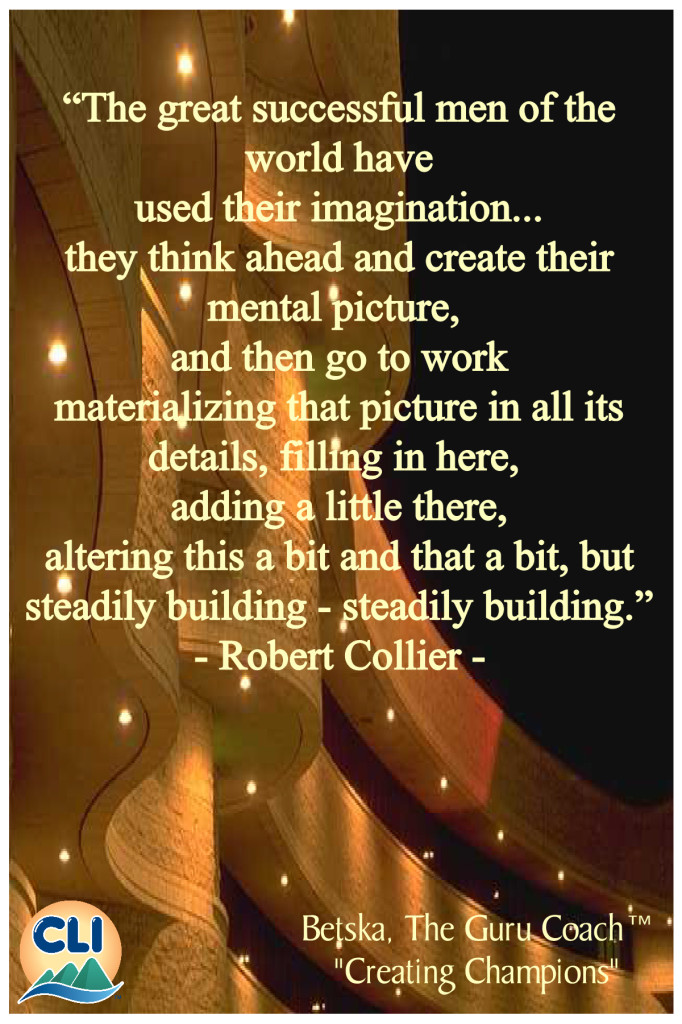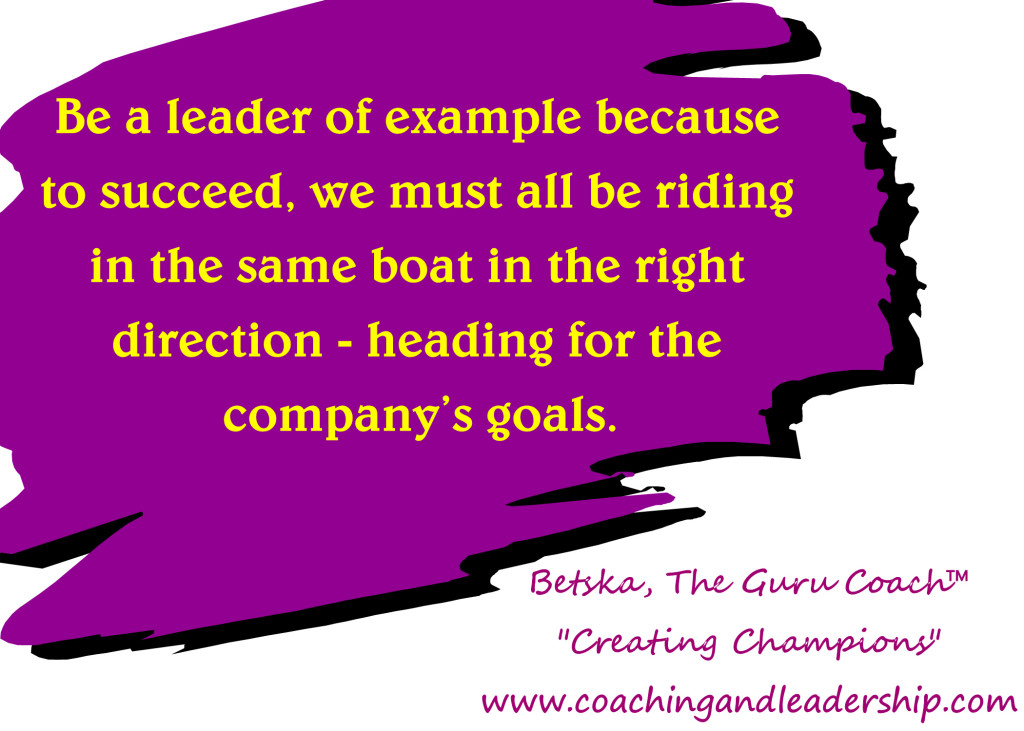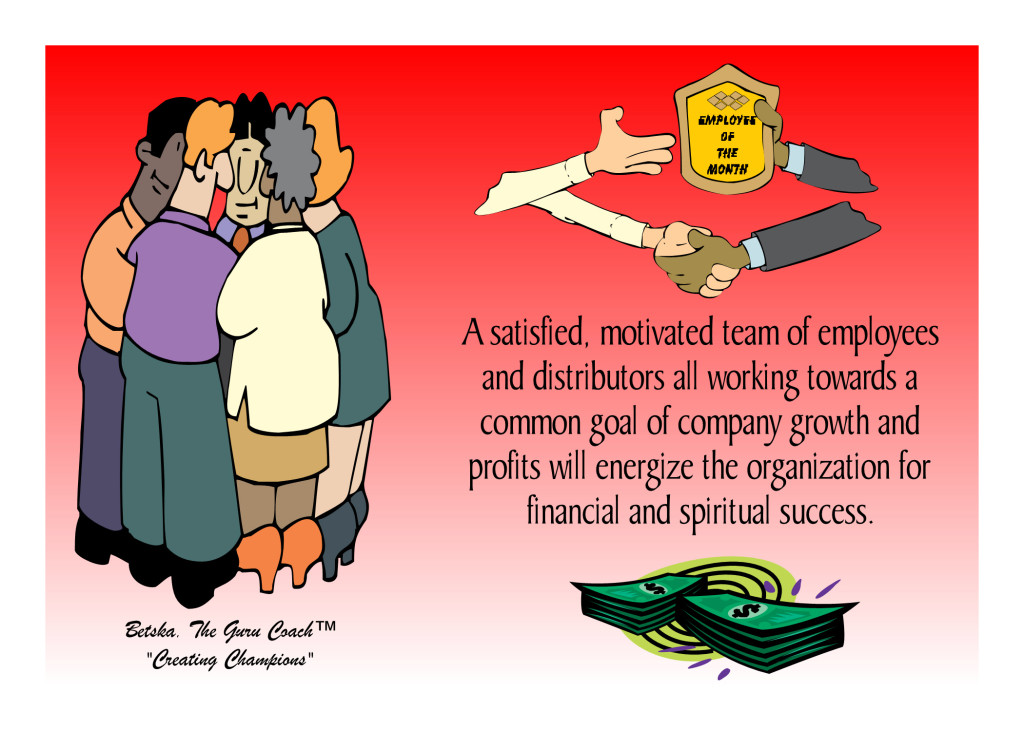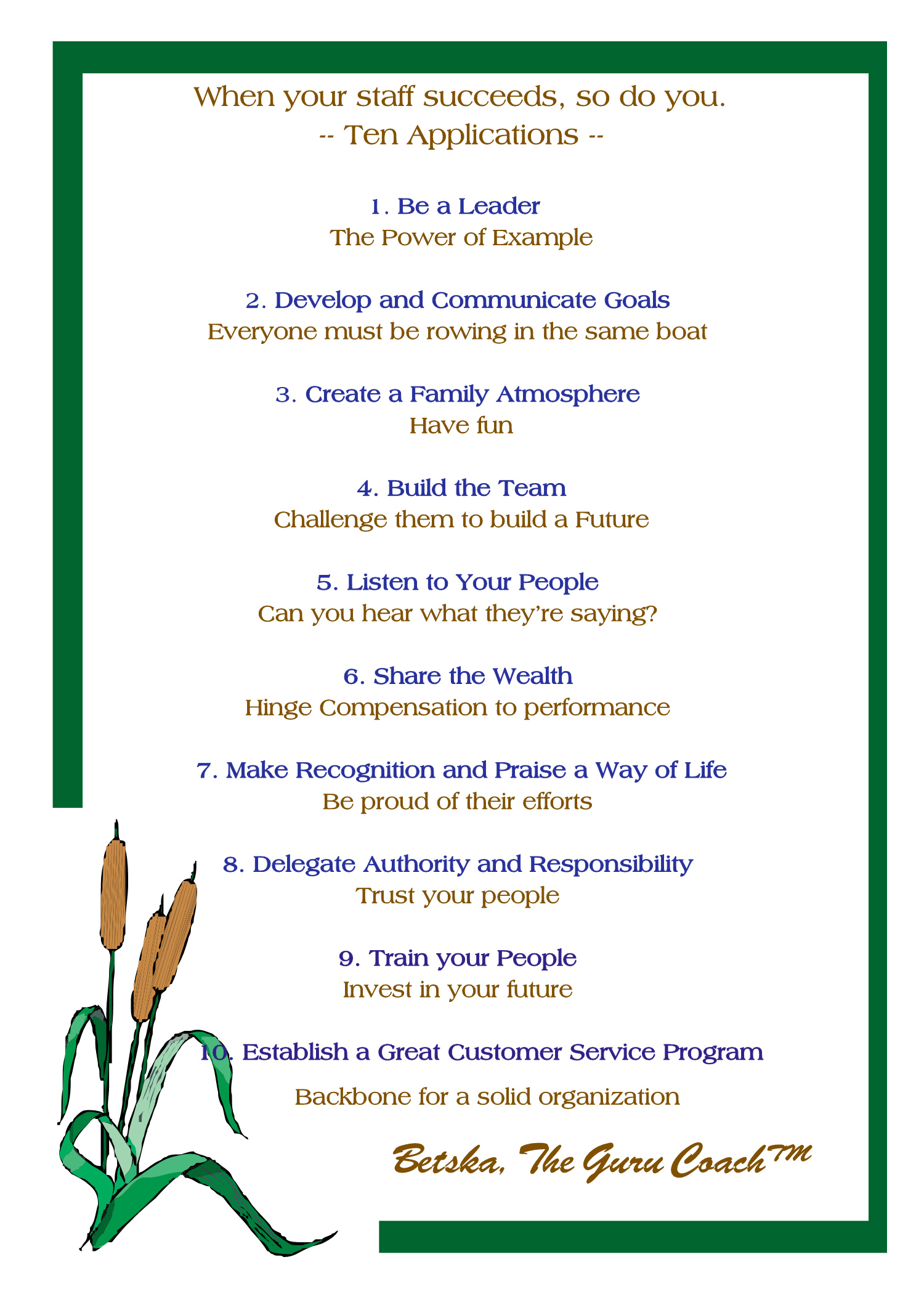Tag Archives: Creating Champions
Fun at Work – Why is this important?
Hmm… we spend most of our days in our respective offices. It makes sense then to put effort into making our time spent in the office and work environment enjoyable. Look up the best companies and “Google“ will surely figure in the top five. Why is working so much fun there?
 A “fun atmosphere” provides employees a release valve, allows them an in-house platform to express themselves and facilitates their personality to flower. It enables employees to better deal with stressful situations and challenges with greater optimism and energy. Fun does not mean work is not taken seriously but by putting in place firm norms and right balance, work places can be more fun than homes.
A “fun atmosphere” provides employees a release valve, allows them an in-house platform to express themselves and facilitates their personality to flower. It enables employees to better deal with stressful situations and challenges with greater optimism and energy. Fun does not mean work is not taken seriously but by putting in place firm norms and right balance, work places can be more fun than homes.
Celebrating Birthdays,Employee Appreciation Days and having Fundoo Fridays or fun with on the spot games and quizzes can really liven up the atmosphere. However, the choice of humour in the office must not be offensive or gender targeted but plain old fun. In Betska K-Burr’s book, Creating Champions, you will find dozens of ways to bring more fun, humour and lightness to the workplace.
Betska, The Guru Coach™
Sign up for CLI QuickTip™ and Blog Updates at:
Coaching and Leadership International Inc.
What did Stephen Covey say about Leadership? (Part II)
You will remember our discussion from Part I of this article about the importance of creating a win-win situation in the workplace where the employees feel greatly valued and respected. Stephen Covey greatly emphasized “Win-Win” in his Habit #4 of The 7 Habits of Highly Effective People.
In Part I we presented the fact that most people are NOT motivated by money.
In this Part II, I present a chart with three categories of ways to recognize people:  MONEY – OPPORTUNITY – RECOGNITION. The chart is invaluable as it has 50+ ways to inspire/motivate your people to make them feel like winners.
MONEY – OPPORTUNITY – RECOGNITION. The chart is invaluable as it has 50+ ways to inspire/motivate your people to make them feel like winners.
The least expensive rewards fall under the “Opportunity” section. These rewards provide the individual with an opportunity to grow. They recognize him/her for a job well done by trusting him/her to take on more responsibility and more authority.
Survey after survey of a broad range of employees, show us that rewards which are intangible and those which show sincere thought and consideration have a much longer-lasting effect.
Learning how to build a solid recognition program is an important part of leadership skills training. CLI believes so much in the importance of a recognition program that we feel it should have prominence in every leader’s Employee Strategic Plan initiatives. Once it has been built, the leader has the responsibility to ensure the program is delivered.
We also feel so strongly about it that a good chunk of time is spent on the topic in our Executive and Business Coach Training Program. Once again, this invaluable information is rarely taught in MBA school.
In setting up your reward program, begin by setting performance goals. Then choose the rewards that are best suited to the goal.
Making People Feel Like Winners
“When performance is within acceptable ranges of goals set for the job, use rewards to increase and sustain positive performance and personal motivation.”
[Tweet this]
The chart — Making People Feel Like Winners is taken directly from my first Canadian best-seller “Creating Champions”.
Betska, The Guru Coach™
Sign up for CLI QuickTips™ and Blog Updates at:
Coaching and Leadership International Inc
Where Did I Put My Rudder?
This is Application #2 for Creating Champions in the workplace, part of a series of blog articles with the overall theme of “When your staff succeeds, so do you.”
Application #2 — Develop and Communicate Goals
“A man without a purpose is like a ship without a rudder.”
-Thomas Carlyle-
(Tweet this!)

Thomas Carlyle, born in 1795, was a Scottish philosopher, satirical writer, essayist, historian and teacher. Considered one of the most important social commentators of his time, he presented many lectures during his lifetime with certain acclaim in the Victorian era.
If Mr. Carlyle was lecturing today, his same words from 200 years ago would still apply today. [The only exception would be that instead of saying “man”, he would replace it with “human”.]
 “There is no analogy more powerful. A ship without a rudder would be lost forever. The same applies to humans.”
“There is no analogy more powerful. A ship without a rudder would be lost forever. The same applies to humans.”
Where is your own personal rudder? Do you know why you are here on this planet? Do you know your purpose? What gives you meaning in your life? If you need a good vehicle to determine your life purpose, visit www.coachingandleadership.com and click on Free Self Coaching. Once you are in, on the side bar, click on Life Spiritual Purpose. Chances are this profound exercise will change your life – in a good way. You will finally be grounded in a spirit-ual purpose which will become your rudder. During one coaching session, I listened as one of my Executive Coaching Clients became totally awakened when she said, “Betska, oh my God. I just realized that my #1 reason for being is ‘To be a student and teacher of leading from the heart first.’” This client had been leading from her logical self for most of her life and was failing miserably as a leader who engages people. Today, she is on track, happier and far more successful because she is leading from her heart first.
Where is your organization’s rudder? Have you created your own department’s MVGV: Mission and Vision statements, a set of Goals and a list of corporate Values which every one needs to follow in order to accomplish the Vision? Most organizations have these foundational elements from an overall corporate perspective; however, what I am referring to here is an MVGV for your own department or unit. For example, the Finance Department should have their own MVGV because their mandate is different than the mandate of Human Resources. Of course, this MVGV, must be aligned with the corporate one.
Whether we are speaking about our own personal rudder or the organization’s rudder, as the old saying goes,’ how can we get anywhere if we don’t know where we are going?’
We live in an unpredictable world with changes happening at the blink of an eye.
So how can we plan if changes are rampant and unpredictable?
“The great successful men of the world have used their imagination…they think ahead and create their mental picture, and then go to work materializing that picture in all its details, filling in here, adding a little there, altering this a bit and that a bit, but steadily building – steadily building.”
– Robert Collier –

Just as Collier states, we must draw the plan and frequently make adjustments to account for demographic and lifestyle changes.
The key is to keep the plan simple. Otherwise we can get overwhelmed.
In my next blog article, we’ll be discussing what Sheryl Sandberg, COO of Facebook, has to say about leadership. This incredibly gifted leader is a role model for both men and women in leadership today.
Tune in next time where we will explore the 7 Quick Planning Steps for SHAPING YOUR FUTURE.
Betska, The Guru Coach™
Creating Champions
Sign up for CLI QuickTips™ and Blog Updates at:
Coaching and Leadership International Inc.
Application #1 to Creating Champions – Inspiring Excellence in the Workplace
Be a Leader – The Power of Example
This is the first application for Creating Champions, part of a series of blog articles with the overall theme of “When your staff succeeds, so do you.”
I’ve searched the learned halls of the internet and the depths of my brain for a good, short definition of leadership. I came to one conclusion. It’s impossible to define leadership in any short, concise way. It’s too complex. The closest I have come is:
Managers shuffle paper, Leaders inspire people.
The term “Leader” applies to anyone who manages people, directly or indirectly. A Leader knows that by creating champions of people, he/she will also succeed. They don’t have to be good at everything, but good leaders know that by setting an example, by exhibiting excellent people skills, chances are their organization will run more smoothly. Leaders inspire their employees to become champions at their jobs.
A Leader is 13 people in one. No wonder it’s a tough job! Let me briefly explain the first 6 of the 13 roles.
1) An Administrator
A Leader has to be good at shuffling paper, each page no more than twice. Not once. Not three times. Twice. Once to read and once to follow-up, if required. You spend as little time as possible shuffling paper because you are needed to help make decisions in meetings. The same applies to each email, handle each email a maximum of two times.
2) A Marketer
A Leader needs to know the business – He or she has to understand the market place, the competition, the customers and the product. Knowing how to make the customer buy is all-important. Be creative. Be service-oriented. Remember to differentiate.
3) A Manager
A Leader is a manager of people and time — a mover and a shaker! Invest in a good time-management system that should contain the following:
– Daily record of appointments and projects.
– Month at a glance.
– Year at a glance.
– A page for recurring tasks and events.
– A section to list what needs to be done.
– A follow-up process.
– A database where the coordinates of prospects are easily accessible.
– A section for expenses.
With advanced software, our role as a ‘Manager’ is much easier.
4) A Salesperson
A Leader needs to be a sales person. For example, the 10 applications to Creating Champions must be sold to the managers of your organization. After all, they are the ones who will sell it to their people and make it work.
5) A Motivator
A Leader is a motivator. Attitudes from above affect the entire organization. It gets a little tough when you hit the l000th employee but I’ve seen people do it! John Myser, former President of 3M Canada Inc., had an enormous capacity for remembering names. During his reign, 3M Canada had over 2,000 employees. Yet, you could hear him calling people by name as he walked the halls of the corporate head office. Treat your people well, care for them and they will reward you with success.
6) A Builder
A Leader is a builder. With the strength of a motivated staff, you will build the organization that you want. Expose your employees to a myriad of different ideas and philosophies by taking their minds outside of the workplace and they will repay you by being more creative on the inside.
For example, Mr. Myser implemented “lunch meets” to which employees would bring their lunch and listen to a topic for an hour. At some of those lunch meets, he would talk about performance and how no one should be afraid to fail.
“Failure is Success if we learn from it.” – Malcolm S. Forbes
(Tweet this)
He brought in a brain surgeon one day to speak about his job. That was incredibly fascinating! On another occasion he invited us to have lunch while listening to a classical orchestra.

Next article, we’ll explore the remaining 6 roles of a Leader and an important chart on The Many Facets of a Leader including interpersonal skills and major assets.
Betska, The Guru Coach™
Creating Champions
Sign up for CLI QuickTips™ and Blog Updates at:
Coaching and Leadership International Inc.
Creating Champions – Passport to the 21st century
Over the next several blog articles we’ll be featuring the details of these ten absolutely critical applications a Leader must do to support the growth of their direct reports and all those in the organization.
All the best product and services in the world are not going to get you anywhere without a motivated team of champions driving your goals to growth and profitability. Creating these champions requires focused attention. It requires extraordinary people skills. It may mean changing your corporate culture, your organization structure and the way you do business with your customer.
Incentive programs can assist an organization in temporarily boosting morale. Use incentive programs to reward solid solutions, instead of quick fixes. To have an enduring effect, treat your employees well on a daily basis by running your organization with feeling, with heart.
![]() “Expect the best from your people. Communicate your expectations. Consciously work at identifying and acknowledging good behaviour. Lead your people to be successful and they, in turn, will make you successful. Recognize their achievements and praise them for their efforts.”
“Expect the best from your people. Communicate your expectations. Consciously work at identifying and acknowledging good behaviour. Lead your people to be successful and they, in turn, will make you successful. Recognize their achievements and praise them for their efforts.”
‘Creating Champions’, is a book that is inspiring excellence in the workplace. The concepts in Creating Champions, when implemented, help organizations overcome communication roadblocks. By encouraging employees and management to communicate openly, challenges can be overcome and opportunities seized.
We welcome you to stand by and read the next several blog articles featuring each of the Ten Applications to Creating Champions.
When your staff succeeds, so do you.
(Tweet this)
Betska, The Guru Coach™
Creating Champions
Sign up for CLI QuickTips™ and Blog Updates at:
Coaching and Leadership International Inc.














